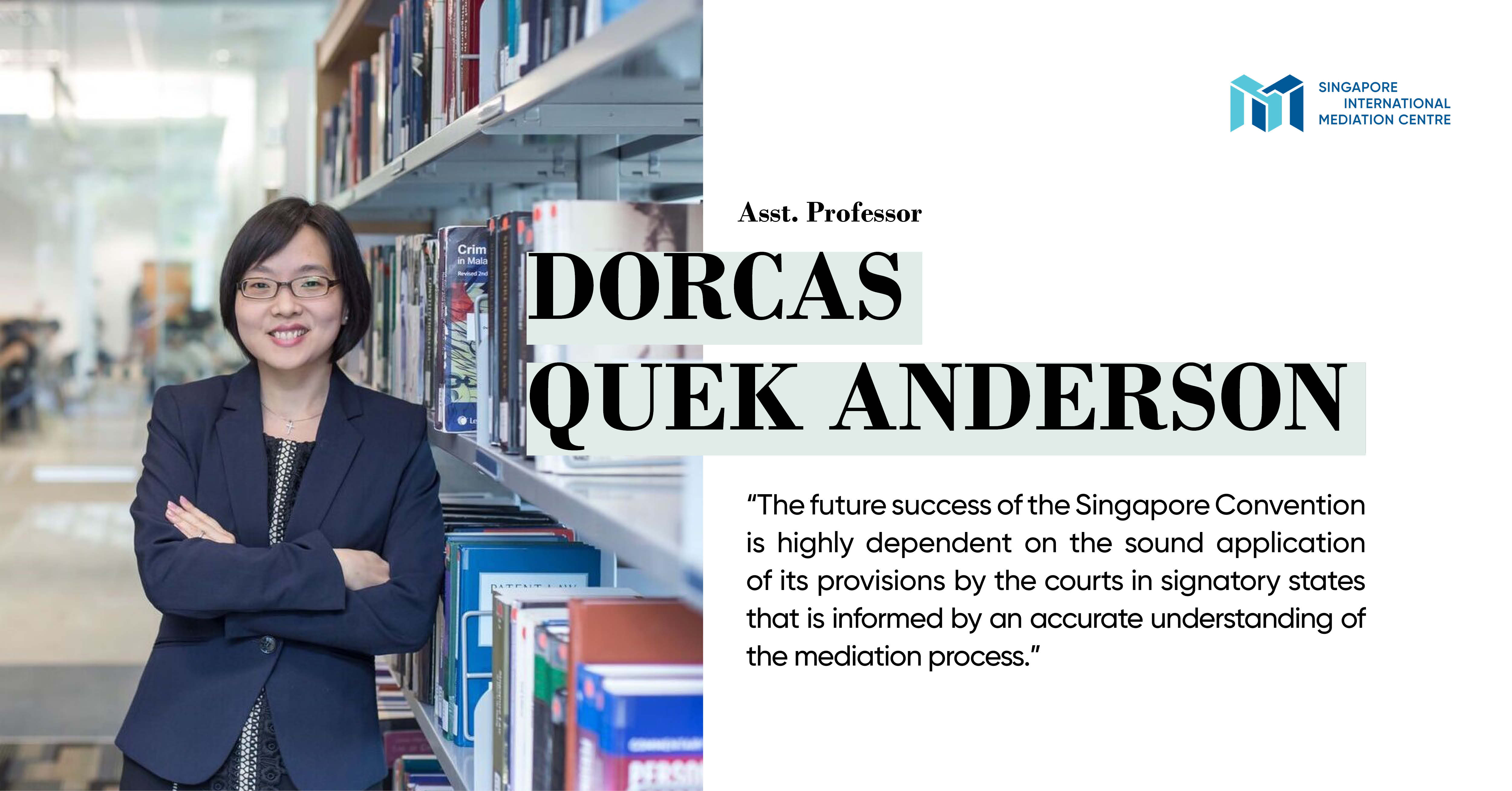The Singapore Convention on Mediation: Supplying the Missing Piece of the Puzzle for Dispute Resolution
Following ratification by Singapore, Fiji and Qatar, the Singapore Convention on Mediation will come into force on 12 September 2020. We have, on two occasions, discussed the Singapore Convention on Mediation Bill – its key features as well as the significance for mediation momentum around the world. In this third of our 4-part series on the Singapore Convention on Mediation, Asst Prof Dorcas Quek Anderson shares an excerpt from her paper* on the fundamental role of the courts in supporting the recognition and enforcement of mediated settlement agreements.

The high level of preliminary support for the Singapore Convention on Mediation within merely a few months attests to the common sentiment across the globe on the need for a uniform enforcement regime for mediation. More importantly, it reflects the substantial growth and increasing awareness of mediation that have fuelled international efforts to develop a harmonised legal framework to support agreements resulting from mediation. In sum, the Singapore Convention supplies a critical missing piece of the puzzle in the international dispute resolution landscape.[1]
The future success of the Singapore Convention is highly dependent on the sound application of its provisions by the courts in signatory states that is informed by an accurate understanding of the mediation process. …
Mediation and litigation have been increasingly perceived as co-equal dispute resolution processes, with each playing an equally legitimate role in advancing access to justice.
Although mediation is known to be an out-of-court process, it cannot be given recognition apart from the courts. It has been observed that the legitimacy of mediation “requires the use of the very litigation system which the parties eschewed in the first place”.[2] Conversely, the courts have acknowledged the significance of mediation because of the role it plays in reducing the cost of litigation, and its ability to provide a broader range of outcomes than formal adjudication. Hence, mediation and the courts have a symbiotic relationship because of their respective need for the other.
Furthermore, mediation and litigation have been increasingly perceived as co-equal dispute resolution processes, with each playing an equally legitimate role in advancing access to justice… Notably, mediation has played an increasingly significant role in the justice system because it has been recognised that access to justice must take into account the rising costs of litigation. In this regard, Singapore’s Chief Justice Menon called for the conceptualisation of rule of law to be broadened to recognise the importance of ensuring access to justice. CJ Menon suggested the adoption of a user-centric approach focusing on affordability, efficiency, accessibility, flexibility, effectiveness, proportionality and peacebuilding.[3]
In summary, mediation and adjudication have a complementary relationship within the justice system. At the same time, they are distinctive processes, and their differences have to be preserved within the justice system.
Turning then to the issue of mediated settlement agreements (“MSAs”), the central question facing the courts is how to enforce these agreements in a way that respects the unique qualities of the mediation process. A secondary question is whether the existing common law principles are adequate to facilitate the enforcement of MSAs.
Concerning the first issue, the provisions of the Singapore Convention – particularly the grounds for non-enforcement – have been drafted to be consonant with both the unique characteristics of the mediation process and the need for mediation to comply with due process and public policy concerns. [The article further discusses how the Convention balances two tensions: maintaining the informality of mediation versus preventing abuse of the enforcement mechanism; and ensuring due process and fair outcomes in mediation as opposed to excessive intervention in mediation.] It is vital that the courts in signatory states are also cognisant of these interests, so as to apply the Convention accurately and to maintain the complementary relationship between the courts and the mediation process.
With regard to the second issue, common law countries have been accustomed to using well-established contractual and evidential principles to determine the existence of MSAs and to enforce them. However, it has been increasingly acknowledged that this conventional method of enforcing settlement agreements has caused the parties substantial inconvenience. First, additional expense is needed to commence a legal action and prove the existence of a contract. Second, where there are disputes concerning the existence of a contract and its terms, mediation confidentiality is likely to be compromised as the court is likely to make an exception to the “without prejudice” rule and examine the parties’ mediation communications as evidence. The rule itself lacks certainty because of the expanding number of exceptions to the rule.
The Singapore Convention marks a milestone in the growth of mediation and the legitimate place it takes within the justice system… At the same time, the Convention has resolved the previous challenges involved in enforcing a mediated settlement agreement with the courts’ assistance.
A wide variety of enforcement mechanisms have thus been created to bypass the litigation process, ranging from allowing MSAs to be enforced as court orders or arbitral awards, to the introduction of hybrid processes such as “med-arb” or “arb-med-arb” to convert MSAs into arbitral awards[4]. Nonetheless, while these innovations may plug the gap for the enforcement of domestic MSAs, they are less effective for the enforcement of cross-border MSAs.
The Singapore Convention thus finds its genesis in the growing desire to deal with the lacuna in the international enforcement mechanism for mediation. …
The Singapore Convention marks a milestone in the growth of mediation and the legitimate place it takes within the justice system. The symbiotic relationship between the courts and the mediation process in many jurisdictions has now been acknowledged and strengthened. At the same time, the Convention has resolved the previous challenges involved in enforcing a mediated settlement agreement with the courts’ assistance. While the final instrument has created a stand-alone enforcement regime for international commercial mediations that has bypassed the need to litigate or arbitrate, the Convention requires the future support of the courts in signatory countries in order to be truly successful and to bring its intended result to fruition. It is therefore crucial that the courts attain a sound understanding of the underlying concerns and interests that were delicately balanced in this instrument.
*Read the full paper here.
Asst. Prof Dorcas Quek Anderson has more than a decade of experience as a practising mediator and in dispute research. Prior to joining academia in 2016, she was a District Judge in the State Courts for almost seven years, where she conducted mediation and early neutral evaluation for hundreds of civil and criminal cases, contributed to the courts’ mediation policies as well as published extensively concerning dispute resolution. She was earlier an Assistant Registrar in the Supreme Court and concurrently Assistant Director of the Singapore Mediation Centre (SMC). Dorcas is an accredited mediator with the International Mediation Institute, Singapore International Mediation Institute, the Centre for Effective Dispute Resolution (UK) and SMC. Dorcas is mediator with SMC and Singapore International Mediation Centre (SIMC). She is also the first Singaporean to be listed on CEDR’s Global Mediators Panel.
[1] See Singapore Ministry of Law, “Singapore and Fiji are the First Two Countries to Deposit the Instrument of Ratification of the Singapore Convention on Mediation” (26 February 2020), <https://www.mlaw.gov.sg/news/press-releases/singapore-and-fiji-are-the-first-two-countries-to-deposit-the-instrument-of-ratification-of-the-singapore-convention-on-mediation> (last accessed 13 March 2020), where Senior Minister of State for Law described the convention as the missing third piece in international commercial dispute resolution.
[2] Laurence Boulle, “International Enforceability of Mediated Settlement Agreements: Developing the Conceptual Framework” (2014) 7 Contemporary Asia Arbitration Journal 35, 58.
[3] Chief Justice Sundaresh Menon, Keynote Lecture delivered at the Negotiation and Conflict Management Group (NCMG) ADR Conference 2019, “Technology and the Changing Face of Justice” (14 November 2019), [56]-[58]; Chief Justice Sundaresh Menon, Law Society Mediation Forum, “Mediation and the Rule of Law” (10 March 2017): (accessed 16 December 2019)
[4] Edna Sussman, “A Path Forward: A Convention for the Enforcement of Mediated Settlement Agreements” (2015) Transnational Dispute Management 6, 6-7; Ellen Deason, “Procedural Rules for Complementary Systems of Litigation and Mediation” (2004-2005) 80 Notre Dame Law Review553, 588. See also Eunice Chua, “Enforcement of International Mediated Settlement Agreements Without the Singapore Convention” (2019) 31 Singapore Academy of Law Journal 572.

